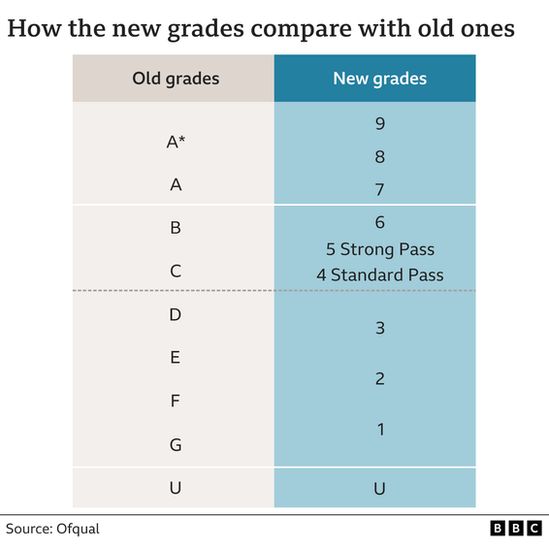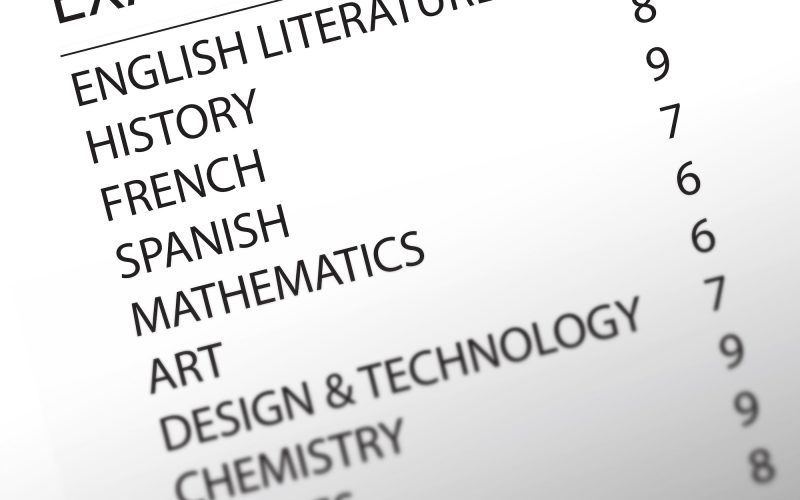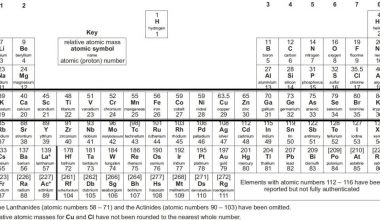GCSE maths exams are over, you did your best and are now sweating over the results? Everyone feels that way, you know? Now, you’re probably wondering; “how many marks to pass gcse maths? Do I have enough marks to pass?
Passing GCSE math is a big deal, and it can feel confusing with all the grades and numbers. It doesn’t matter if you’re a student preparing for the exams or one just looking to understand the mechanics of GCSE grading, you will find the essential details surrounding the marks required to pass GCSE Mathematics in this article.
So, we will go ahead and discuss the grades and then answer the question of how many marks it is to pass GCSE maths
Table of contents
What are the new GCSE grades?
The 9-1 grading scheme was brought in alongside an overhaul of the curriculum in England in 2014.
Gone are the days of A*, A, B, and so on which seemed like ancient history. Now, it’s all about numbers. GCSEs are scored from 9 (highest) to 1 (lowest). Don’t worry, a 4 is still considered a good pass, similar to the old C grade.
How To Pass GCSE Maths
Passing GCSE Maths requires strategic preparation and a focused approach. Here’s a simple guide to help you succeed:
Know the Exam Format
Understand the structure of the GCSE Maths exam including the types of questions, and the allocation of marks.
Master the Basics
Build a strong foundation by reviewing fundamental concepts from earlier years. Without a solid grasp of the basics, advanced topics can become challenging.
Practice Regularly
Consistent practice is crucial. Work through various problem sets, including past papers and sample questions.
Read: GCSE Revision Plan: How To Position Yourself For Greatness
Understand Problem-Solving
Focus on problem-solving strategies. Learn how to approach different question types and apply appropriate methods.
Seek Clarification
Don’t hesitate to ask your teacher for help with challenging topics. Clarifying doubts promptly is essential for progress.
Use Resources
Utilize textbooks, online resources, and educational platforms to reinforce your learning.
Active Learning
Instead of passively reading, engage with the material actively. Solve problems, explain concepts to others, and use interactive tools.
Time Management
Practice solving questions within the allotted time to enhance your speed and accuracy during the exam.
Practice Past Papers
Work on past GCSE Maths papers to get familiar with the exam format and gain insight into the type of questions asked.
Revise Regularly: Don’t leave revision for the last minute. Consistent modification helps reinforce your memory and understanding.
Exam Technique: Understand how to approach the exam. Read questions carefully, manage time wisely, and show your work for method-marked questions.
Focus on Strengths and Weaknesses: Identify your strengths and weaknesses. Allocate more time to topics you find challenging.
Mock Exams: Use mock exams to simulate the testing environment and identify improvement areas.
Remember, success in GCSE Maths comes through consistent effort, focused study, and a positive attitude.

The number scale is not directly equivalent to the old letter one. However, the two scales do meet in certain places:
- the bottom of grade 7 is aligned with the bottom of grade A
- the bottom of grade 4 is aligned with the bottom of grade C
- the bottom of grade 1 is aligned with the bottom of grade G
- three number grades – 9, 8, and 7 – correspond to the two previous top grades of A* and A
Exams watchdog Ofqual has said fewer grade 9s will have been awarded than A*s “to identify exceptional performance”.
Also, read: What is the Best Calculator For GCSE Maths?
How Many Marks To Pass GCSE Maths
Students must achieve a grade of 4 for a “standard pass” and 5 for a “strong pass.” This signifies that an individual with nine grade-4s has officially cleared all their examinations.
Nonetheless, the government’s school performance rankings rely on the proportion of students attaining a grade 5 or higher in English and mathematics GCSEs. Numerous sixth forms mandate a minimum count of grade 5s or 6s as a prerequisite for admission to further studies.
Note:
- Sometimes the board’s exam decides what it will be in a year.
- That would depend on whether you’re doing Foundation Tier or Higher Tier.
- A high mark in one can compensate for a low mark in another. If you mean for exams being taken now, then the grade boundaries won’t be set until after all the papers have been marked. (Although grade boundaries for prior years can sometimes be indicative.)
Why Were GCSE Grades Changed?
The numeric grading system was implemented as part of an extensive curriculum reform in 2014 under the direction of then-Education Secretary Michael Gove.
This shift reduced the significance of coursework in GCSEs compared to earlier methods, as final exams predominantly determined grades across nearly all subjects.
The intention behind these qualifications was to introduce a higher level of complexity, with examinations being conducted after a two-year study period. Previously, students covered the syllabus through multiple modules and regular evaluations throughout the course.
During this period of transformation, the government contended that the new grading scale “more accurately acknowledges the accomplishments of high-achieving students” due to the inclusion of additional grades, facilitating enhanced differentiation.
Moreover, the transition from letter grades to numerical ones aimed to offer clarity, particularly to potential employers. It ensured that distinctions between students who undertook the new, more rigorous GCSE and those who followed the earlier reformulated version would be evident.
Also, see: Corbettmaths Review – How does it Work? Is it Useful?
How are GCSEs Graded In Northern Ireland?
Grading regulations underwent modification in Northern Ireland as well.
During the summer of 2019, the Northern Ireland Council for Curriculum, Examinations, and Assessment (CCEA) implemented a fresh nine-tier grading scale ranging from A* to G, which includes an additional grade, C*.
However, students might also receive results on a 9-1 scale if they opt for examinations administered by English examination boards.
How Are GCSEs Graded In Wales?
In September 2015, the Welsh government launched updated GCSE courses, incorporating notable modifications.
The most substantial revisions occurred in English language, Welsh language, and mathematics subjects.
Despite these changes, Wales maintained its letter-based grading system, ranging from A* to G.
The New GCSE Grading System
To ensure consistency and equity, the structure has been devised so that the lowest point of grade 1 aligns with the lowest point of grade G, grade 4 corresponds to the base of grade C, and grade 7 matches the foundation of grade A.
For instance, any student who would have obtained a grade C in the previous system will now secure a grade 4 or above. This harmonizes comparisons between the older and newer grading systems for educational institutions and employers.
Formerly, a C grade signified a pass in GCSEs. This is a grade 4 in the present framework, denoting a ‘standard pass.’ Institutions and employers that once regarded a grade C as a requirement for further education or employment should now accept a grade 4.
Designated as a ‘good pass,’ grade 5 holds significance, and it’s noteworthy that schools are now evaluated based on the proportion of students achieving grade 5 or higher.
Concerning GCSE exam papers, the existing foundation paper encompasses a grading range of 1 to 5, while the current higher paper spans a grading range of 3 to 9.
Ofqual rules regarding the design of exam papers
As part of the revamped mathematics curriculum, Ofqual established specific regulations regarding the composition of exam papers to ensure uniformity in their design across different exam boards.
These regulations stipulate the following:
- For higher-tier papers, half of the marks should cater to grades 9, 8, and 7, while the remaining half should target grades 6, 5, and 4.
- Regarding foundation tier papers, half of the marks should be aimed at grades 5, and 4, and the upper limit of grade 3, with the other half targeting the lower limit of grade 3 and grades 2 and 1.
When formulating these rules, Ofqual’s primary objective was to guarantee an appropriate level of challenge encompassing the full spectrum of abilities. Consequently, higher-tier papers now incorporate more intricate questions, with approximately 20% intended for grade 4. This approach helps elucidate the relatively lenient grade boundaries for achieving a grade of 4 in higher-tier papers.
Also, see: Is Further Maths GCSE Worth It? Further Maths GCSE Guide
What are the GCSE grade thresholds?
The GCSE grade thresholds delineate the minimal marks a student must attain to attain a specific grade. These boundaries differ for each subject and undergo slight adjustments annually to ensure equitable treatment of students.
Senior examiners establish the grade thresholds each year, determining whether a student secures grades 1, 2, 3, and others.
How are the GCSE grade thresholds determined?
Exam boards endeavor to maintain consistent difficulty levels for achieving particular grades over time. If a year’s exam paper proves more challenging than the previous year’s, the grade boundaries are lowered accordingly. This principle is known as Comparable Outcomes.
Grade thresholds for a subject are established post-exams and subsequent marking completion. Senior examiners consider various factors in setting these boundaries, including:
- Feedback from examiners about the specific paper
- Question papers from preceding years
- Data concerning the prior achievements of the student cohort taking the exam
- Previous statistical data
Examiners particularly scrutinize work near the grade boundaries to ascertain the appropriate positioning of these boundaries.
When are the GCSE grade thresholds disclosed?
Grade thresholds are unveiled on GCSE results day. Previously, they were released before the results day; however, this practice was changed to alleviate students’ stress in attempting to forecast their grades. Historical grade thresholds can be accessed on the websites of respective exam boards.
What were the GCSE grade thresholds in 2022?
Each exam board determines Grade thresholds individually based on their question papers. We will examine the grade thresholds for each exam board for the year 2022.
Worth noting is that this was the initial exam session following the Covid-19 pandemic. GCSE exams were not held in 2020 and 2021, with grades awarded through teacher assessment.
Learners facing exams in 2022 encountered substantial disruptions to their learning. Consequently, Ofqual decided to provide advanced information on exam topics. Grade thresholds were suitably adapted to reflect a midpoint between the 2019 results and the elevated, teacher-assessed outcomes in 2020.
For WJEC Eduqas GCSE maths, all scores are out of 240, except for OCR, where the scores are out of 300. In parentheses, you can find the respective comparative numbers.
What proportion of students attain each GCSE grade?
This distribution varies among different year groups and subjects. The allocation of grade boundaries doesn’t aim for a fixed percentage achieving each grade; instead, they’re determined based on the paper’s difficulty and the historical data of the students taking the exam.
Nevertheless, we can examine data from previous years to gain insight into the percentage of students achieving each grade. Specifically, let’s compare data for 2019 and 2022, as GCSE exams were not held in 2020 or 2021 due to the pandemic. The following percentages of students achieved each grade:
It’s evident from both tables that the percentage of students attaining grades 9-4 in Mathematics is comparatively lower than the proportion achieving grades 9-4 across all subjects.
The outcomes for GCSE English language parallel those of Mathematics, potentially due to the mandatory nature of both subjects, while other subjects are elective.
Also, read: What Are GCSE Mocks Exam? Your Ultimate Guide For GCSE and A-Level
Center Assessed Grades in 2020 and 2021
It’s insightful to contrast the results from 2018 and 2019 with those from 2020 and 2021, when results were determined through teacher assessment, considering the pandemic’s impact. Likewise, the results from 2022, amid pandemic-related challenges, offer valuable insights.
The graph below illustrates the percentage of students achieving each grade in mathematics from 2018 to 2022:
Notably, in 2020 and 2021, there was a notable decrease in the percentages attaining lower grades compared to 2018 and 2019, while the percentages attaining higher grades increased. This is particularly noticeable for grades 9-4.
Analyzing historical data, we observe this anomaly primarily linked to the COVID-19 pandemic’s effects, not just within mathematics.
The table below demonstrates the percentages achieving 9-4, or the equivalent A*-C, over the past eight years:
Percentages have remained relatively stable even during the shift to the new grading system, except for 2020.
Mathematics experienced comparatively less impact. In contrast, subjects like computer science saw the percentage achieving a 9-4 surge from 62.6% in 2018 to 80.1% in 2020.
In 2022, Ofqual aimed to facilitate a transitional period, eventually returning to pre-pandemic levels in 2023. The 2022 distribution of mathematics results deviated somewhat from the pattern. Nonetheless, the overall percentage attaining grades 9-4 in mathematics fell between the percentages in 2018/2019 and 2020/2021.
Factors such as the previous achievements of the year group or pandemic-induced disruptions to learning may have contributed to these divergent results.
Looking ahead, the grade boundaries for 2022 should be interpreted with care.
What about other GCSE subjects?
In general, the proportions achieving each grade in each subject do vary. Let’s have a look at the proportion achieving 9-4 in 2022 across a few subjects:
| Maths | 64.9% |
| English language | 69.8% |
| Physical education | 81.9% |
| Religious studies | 76.7% |
| German | 83.5% |
| Double award science | 60.5% |
| Physics | 93.7% |
Although these outcomes surpass the levels observed before the pandemic, a consistent trend emerges when examining various subjects. Mathematics and English results are comparatively lower than those in numerous other subjects. As mentioned earlier, all students must take English and Mathematics, while selecting other subjects is driven by personal preference.
The scenario with Science is worth contemplating. Typically, students with greater aptitude are enrolled in separate science subjects, while students with lower proficiency opt for combined science. This distinction might account for the variations in the grades assigned within these subjects.
Specific subjects with the highest accomplishments include modern foreign languages like Urdu, Punjabi, and Polish. This phenomenon is probably attributed to those undertaking these GCSEs being native speakers of the respective languages. In 2022, 93.4% of students pursuing modern foreign languages attained grades 9-4.
Also, see: How to Appeal A Level Results – Process Explained
FAQs
A GCSE pass mark in Maths typically lands around a grade 4. This is considered a standard pass and shows you have a good grasp of the key concepts.
The exact pass mark for GCSE Maths 2024 isn’t officially announced yet, but it’s expected to be around a grade 4. This translates to roughly a standard pass.
A “fail” in GCSE Maths usually means getting a grade 3 or lower on the exam. This indicates needing more practice before moving on. Don’t worry, though, this post can help you figure out what to do next!
Conclusion On How Many Marks To Pass GCSE Maths
Understanding the threshold for passing GCSE Mathematics holds significant importance for students. While the precise number of marks required may vary depending on the exam board and specific circumstances, the overarching message remains clear: diligent preparation and focused effort are essential.
Striving not just to meet the passing mark but to grasp the concepts, refine problem-solving skills, and achieve a solid foundation in mathematics will serve students well in the exam hall and their future academic pursuits.
The journey toward success in GCSE Mathematics is not solely about attaining a specific number of marks but rather about gaining a comprehensive understanding of the subject and embracing the skills that will stand as invaluable assets in the years to come.
References
- www.bbc.com – GCSE grades: The 9-1 boundaries explained
- thirdspacelearning.com – GCSE boundaries






